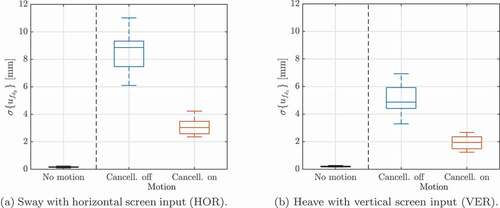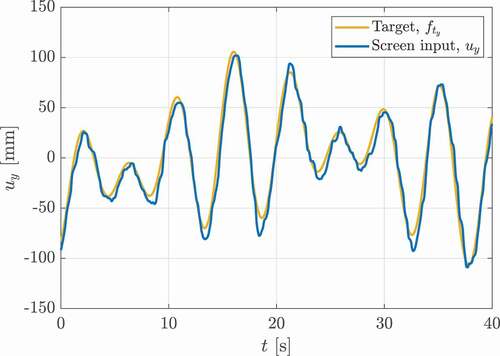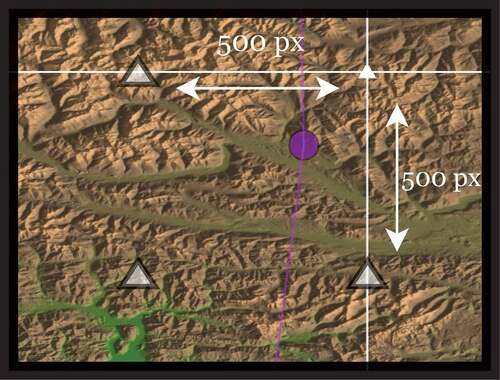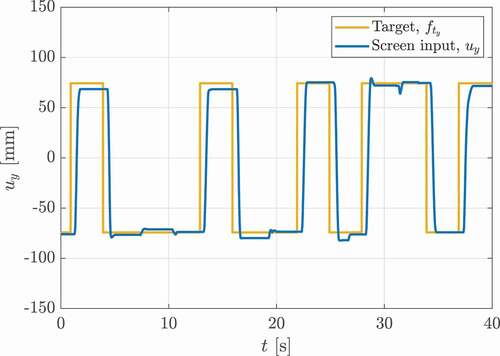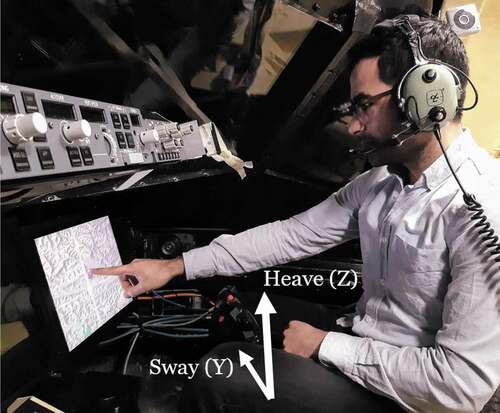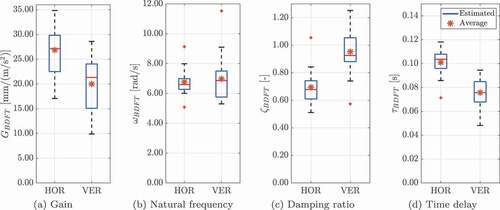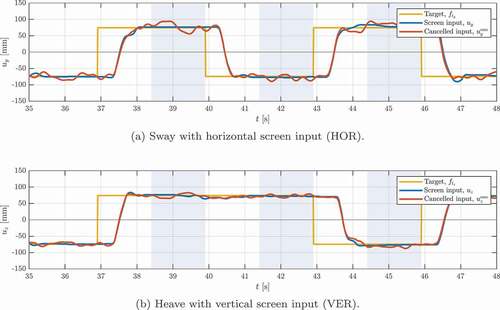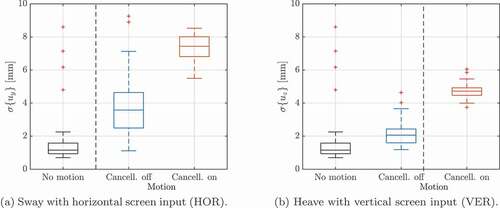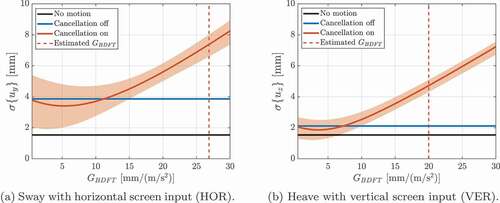Figures & data
Table 1. Multisine properties used for the disturbance and multisine target signals
Figure 2. Display with the target location path for a single run across the touchscreen for the multisine task

Figure 10. Typical time traces for the multisine task with BDFT cancellation in both the HOR and VER conditions (Participant 1, Trial 1)
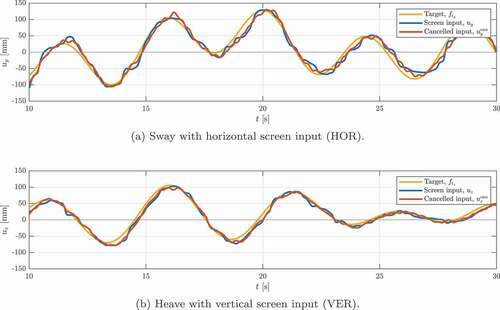
Figure 11. Comparison of the standard deviation of the disturbance component in the input signal for the multisine task
